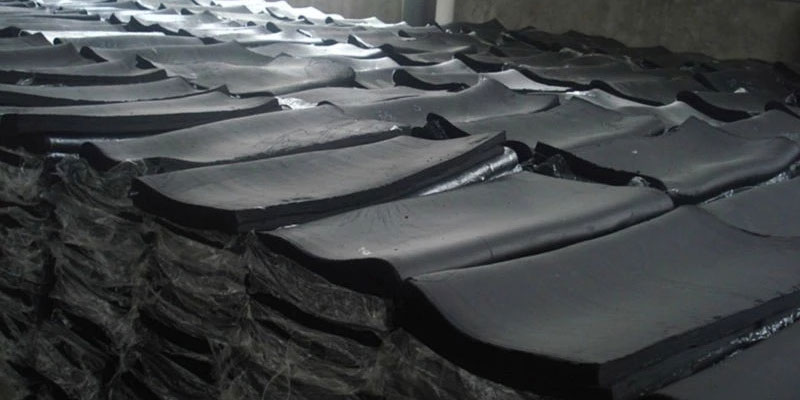Tyre crumb rubber powder
Tyre Crumb rubber powder is a rubber produced by recycling of scrap tires. During the recycling process, steel and tire string are by removed, leaving tire rubber with a granular consistency.
Tire crumb rubber powder can be obtained from tires through two principal processes:
- Ambient, which is a method in which scrap tire rubber is ground or processed at or above ordinary room temperature.
- Cryogenic, a process that uses liquid nitrogen to freeze the scrap tire rubber until it becomes brittle and then uses a hammer mill to shatter the frozen rubber into smooth particles.
Production of Tyre crumb powder
Ambient Method:
One of the known method of recycling worn out tyre is to process them through mechanical shearing and grinding. This approach produces crumb rubber, which can be used as a material to entirely or partially replace mineral aggregates, manufacturing more environmental friendly composite materials, such as rubberized asphalt paver blocks. Binder modification with crumb rubber is a modern technology for asphalt production with lower ductility. An environmentally friendly approach for tire recycling is devulcanization.
Devulcanization is a process in which vulcanized rubber is mechanically crushed in the presence of a reducing agent and then, surface devulcanization of various crushed vulcanized rubber with a particle size from 0.5 to 5 mm is carried out on rollers. The resulting vulcanized rubber particle is treated with styrene-butadiene to make elastomeric composites which has increased resistance for ageing and abrasive wear of the rubber.
Cryogenic Method :
Cryogenic grinding method is to the grinding of scrap tires at temperatures near minus 80oC by means of liquid nitrogen. Cryogenic processing method usually uses pre-treated used tires as raw material , most often in the form of chips or granulate.
This process is a four-phase system which includes initial size reduction, cooling, separation, and milling. The material enters a freezing chamber where liquid nitrogen is used to cool it from 80 to –120 °C, below the point where rubber becomes rigid material and can be easily crushed and broken.
Due to of its brittle state, fibres and metal are easily separated out in a hammer mill. The granulate then passes through a sequence of magnetic screens and sifting stations to remove the last leftovers of impurities. This process requires less energy than others and produces rubber crumb of much finer quality.
Some of the major uses of Tyre crumb rubber
Sport surface
- Playgrounds and Recreation Areas
- Athletic Tracks
- Tennis and Basketball Courts
Construction Industry
- Hospital, Industrial, and Bathroom Flooring
- Floor Tile
- Foundation Waterproofing
- Dam, Silo, and Roof Liners
Automotive Industry
- Bumpers
- Mud Guards and Fenders
- Floor Mats for Cars and Trucks
- Floor Liners for Trucks and Vans
Geotechnical/Asphalt Applications
- Rubberized Asphalt for Roads and Driveways
- Drainage Pipes
- Soil Conditioner
- Porous Irrigation Pipes
- Road Building and Repair
Adhesives and Sealants
- Adhesives and Sealing Compounds
- Textured and Non-Slip Paints
- Roof Coating and Waterproofing
Shock Absorption and Safety Products
- Shock Absorbing Pads for Rails and Machinery
- Sound Barriers for Highways
- Abrasion Lining in Mining Equipment
Rubber and Plastic Products
- Pipe Insulation and Lining
- trash Cans
- Shoe Soles and Heels
Different grades of crumb rubber are available at Intercity Enterprises.


